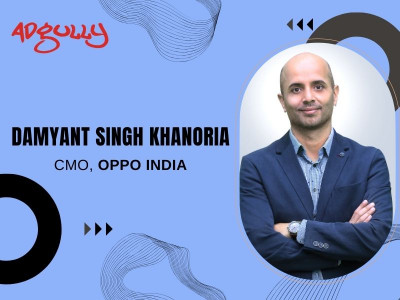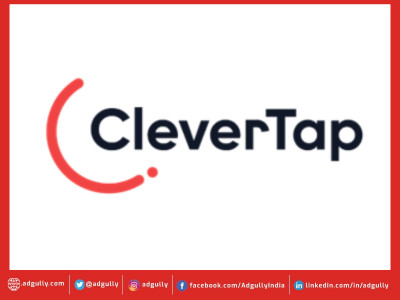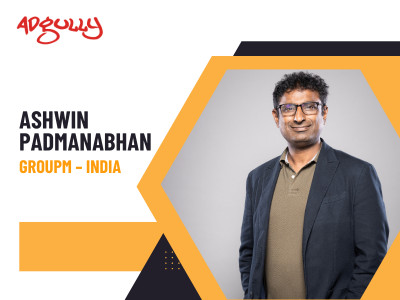Retention is the new growth in pandemic times: Sunil Thomas, Clevertap
CleverTap, an AI-powered customer lifecycle and user engagement platform, has been helping brands maximise user lifetime value. This essentially means that the app leverages customer data to deliver brand communications at the right place, time and via the right media to enable businesses to build long term relationships with customers.
GAMEXX Awards 2021 Early Bird Discount Extended Last Date - Wednesday, June 30, 2021 - ENTER NOW
In conversation with Adgully, Sunil Thomas, Co-Founder and CEO, Clevertap, speaks on the increasing relevance of customer experience, engagement and retention in an increasingly digitised world.
Can customer experience become a powerful differentiator for brands?
It can definitely be a differentiator, no matter what industry you’re in. There are literally hundreds of apps vying to retain users in every sector. And the more delightful and magnetic your customer experience is, the more you increase your chances at standing out from your competition.
For instance, while working out is essential for health, not everyone is equally motivated to do it. Sending a motivational message to a fitness app user an hour before their usual workout time reminds them about their workout and primes them to start their exercise.
When it comes to CX, the 3 important things to focus on are: context, intent, and relevancy.
First off, it is crucial for your engagement to be contextual. This is where calendar holidays and time of day matter. Food delivery apps ramp up their messaging during weekends because that’s when demand increases. Understanding where your customers are in their lifecycle is also helpful in creating a contextual experience.
Secondly, you have to be relevant to your customers. Let’s say a customer added a pair of shoes to her cart. Providing relevant recommendations – for example, what other customers who’ve purchased those shoes have also bought – can increase your customer lifetime value and revenue.
Lastly, brands need to equip themselves with the ability to figure out user intent, because you need to have information available at your fingertips to create contextual and relevant content. Without the right amount of real-time data, you will have no idea what the customer is looking to solve.
People usually associate CX with UI and graphics, but it’s a lot more than that. All experiences between the brand and the user matter. At the end of the day, good CX is about forging relationships with the right audience with the right message at the right time.
With increasing digital offerings, will the competitive landscape for app-based brands be shaped around customer engagement metrics? What are these metrics?
What every app-based brand wants at the end of the day is to retain their users. And the key to retaining their users is by engaging them in a contextual, personalised, and relevant manner. More users engaging with your platform means more chances that they stay longer and increase their lifetime value to your company.
Retention is more of a lagging indicator. To understand how well an app will retain its users, we need to consider important leading indicators like daily active users, monthly active users, open rates, click-through rates, average session duration, repeat purchases, subscription renewals, and average order value.
There are more that you could track, however, mature businesses tend to focus more on retention metrics: monthly retention rate, key conversion rates, and LTV (lifetime value).
For an e-commerce business, the key conversion metric would be the time taken before making the second purchase. Repeat purchases are important since the first purchase could happen due to a discount. In fintech, repeat transactions are a key indicator of user engagement and retention. Also, amount transacted is an important indicator of engagement. For an SVOD platform, converting a free user to a paid subscriber is the key indicator. For an edtech business, their key engagement metric would be the program completion rate – whether users completed their first chapter or their first course.
What app-based brands/ categories outperform at customer engagement? What are the learnings?
With the COVID-19 pandemic, categories like foodtech and e-commerce are performing quite well. These industries are able to address the current needs and challenges faced by customers, be it home-delivered groceries or meals.
Media and entertainment apps are performing well and are sticky (retain users over time). There’s a whole range of streaming apps, from those with short, 30-second videos to platforms like Netflix and Hulu where users can binge watch for hours. Another industry that’s seeing high stickiness and engagement is gaming, of course. Games create positive user habits early on in the user journey, leading to increased engagement and gameplay.
With the pandemic, focusing on one’s health and wellness is the need of the hour. We’ve seen a significant increase in engagement rates for healthcare apps – be it online consultations or pharmacies. We’ve also seen high engagement for wellness apps that focus on mindfulness and sleep.
Learnings:
Successful user engagement and retention begin with a successful onboarding process. Customers who have seen the best results always prioritise a seamless onboarding experience that educates the user about the app’s benefits and convinces users of the value early on.
The next step, followed by customers who have seen the best results, is to focus on building positive user habits through campaigns that are highly contextual, timely, and personalised.
The most successful apps always give data its due importance. By focusing on patterns and trends in user data, they can work towards fine-tuning the user experience, resulting in better engagement and retention.
How do demographics come into play when it comes to app engagement and retention metrics?
This is a real challenge faced by brands as the generation gap has dramatically widened these days. The difference between my dad’s, my, and my son’s generations is drastic. It’s a challenge for brands to navigate through these generational differences.
This is what successful brands like Netflix have done exceptionally well. They recognised and acknowledged this challenge early on. Netflix has different profiles per user and they treat each user differently rather than treating a device as a user. So, every member in the family, including children, gets personalised recommendations and messaging despite using the same device.
Many brands fail to recognise this challenge. For these non-progressive brands, a user becomes a device. Then the users become a TV, desktop, iPad, or laptop. These brands miss an important opportunity to deliver value with personalisations and recommendations appropriate to the user.
It is important for brands to treat users according to their preferences and habits and not their devices. The world is rapidly changing and brands need to understand that this is a big thing.
Do you see an opportunity from Tier 2 and 3 consumers who use low-cost feature phones and are data conscious?
There’s a huge opportunity to engage with Tier 2 and 3 consumers. At CleverTap, we’ve just launched an SDK on KaiOS. KaiOS brings WiFi, apps, and other advanced features to phones that are affordable. Being the 3rd largest OS, they’re already enabling over 100 million smartphones, which include first-time internet users from Asia, Africa, and South America.
Currently, there are a lot of opportunities for brands to efficiently engage with Tier 2 users. In many parts of the world, especially in Asia, we have a lot of such users and this is a great opportunity to tap into these users.
We service a lot of leading brands in India and Asia, like The Times of India and Dainik Bhaskar, who are focused on personalising engagement with Tier 2 and 3 audiences. ShareChat is another one, a leading social platform focusing on regional languages and Tier 2 audiences. Jio uses KaiOS to power its engagement strategies.
At CleverTap, we offer personalised engagement on WhatsApp in 68 languages. We understand the importance of engaging with the ‘next billion users’ and our recently launched KaiOS SDK is a testament to our beliefs.
While Android and iOS remain a big thing, we’ve launched our SDK for KaiOS which is adopted by leading brands like Reliance Jio, Nokia, Alcatel, and Ooredoo.
What are the growth trends for the company with acceleration in digital adoption over the past year?
As far as I know, the only companies that have grown through this pandemic are companies that have fully adopted the digital model or have wholeheartedly committed to being digital-first. During the past year, some verticals have performed better than others. Health and wellness, edtech, e-commerce niches, and marketplaces, where buyers and sellers come together have grown really fast.
An important trend that we’ve seen emerging is that of super apps like Gojek, AirAsia, TATA, and Reliance. A lot of companies have grown from solving a single problem to providing more and more services to their users. This is a way through which large brands try to offer increasing value to their customers.
Most importantly, companies with maximum growth have really succeeded in retaining their users. This is possible only through their in-depth understanding and analysis of user behaviour, the insights of which they apply to their engagement strategy. The companies who have retained their users have done it really well. In essence, retention is the new growth.
















Share
Facebook
YouTube
Tweet
Twitter
LinkedIn